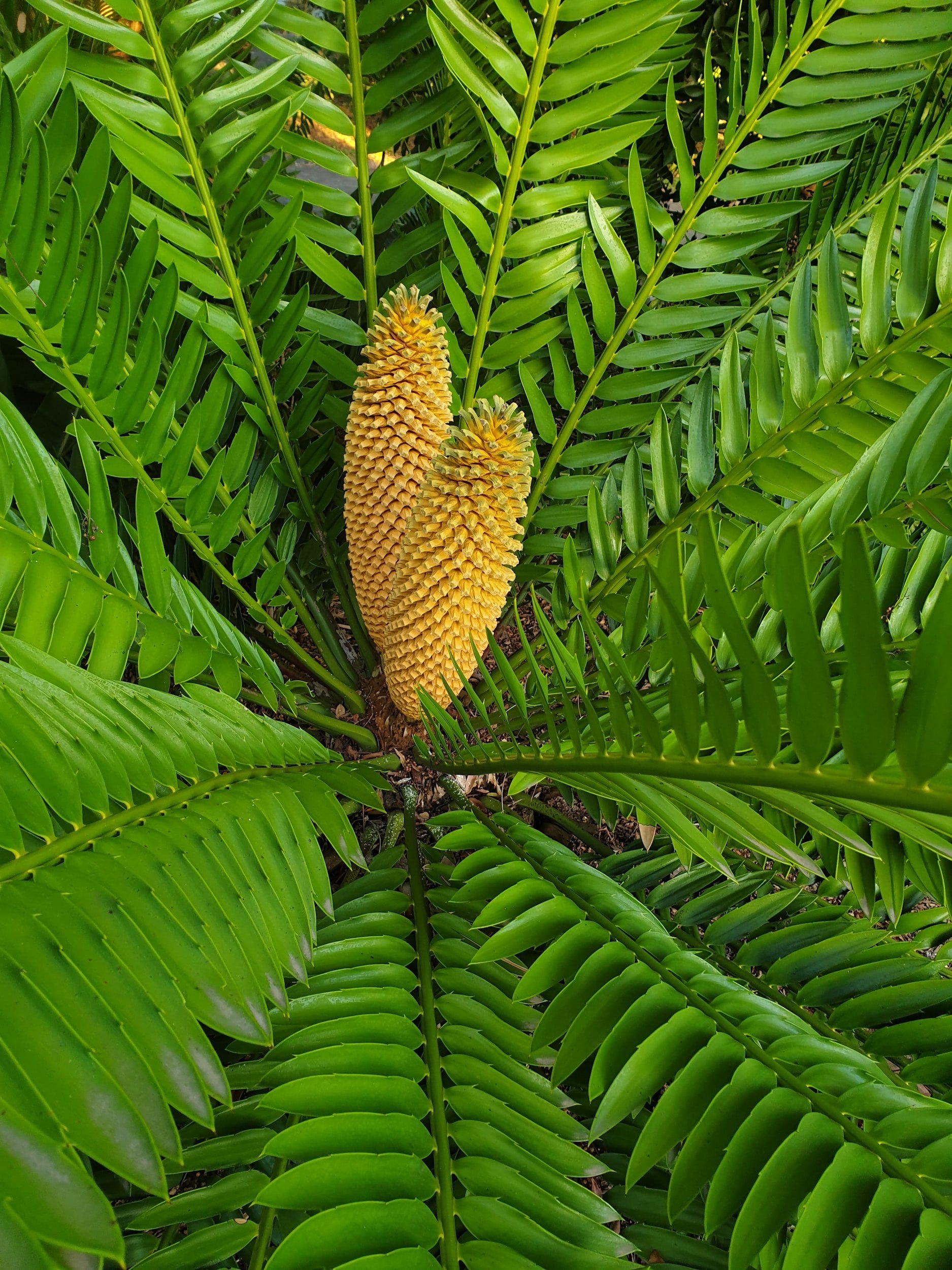Timeline of Plants – Can you find all of the plant groups in your yard?
Plants are ancient and have evolved for hundreds of millions of years on Earth. The Plant Kingdom is vital to our health and our survival.
Bryophytes are a group of early land plants. They lack a vascular system and instead absorb liquids like a sponge. Liverworts, hornworts, and mosses are all classified as bryophytes. These low-growing plants do not have true roots, stems, or leaves. They reproduce with spores.
Ferns and their Allies also reproduce with spores, but these plants evolved and have a vascular system. Ferns and their allies (club mosses, whisk ferns, horsetails, and ferns) are the earliest plants that developed a vascular system. This system allows plants to transport water and nutrients throughout their tissues. Ferns and their allies have true roots, stems, and leaves.
Gymnosperms are the first vascular plants to have seeds, but no flowers. Evolution allowed fertilization to occur on the female plant, rather than on the ground. Gymnosperm means “naked seed.” They are considered naked because their egg cells are exposed to the air and fertilized when pollen lands directly on them. Plants in this group include cycads, ginkgo, gnetophytes, and conifers.
Angiosperms reproduce with seeds that are formed within a fruit. Angiosperms are the only plants that have flowers and fruits. Angiosperm means “encased seed.” Flowering plants first appeared during the Mesozoic era and have outnumbered all other plant groups since. Insects help angiosperms reproduce by transferring pollen from flower to flower. Angiosperms evolved into two groups: Eudicots and Monocots.
Monocots are angiosperms that have parallel veins in their leaves. Their flower parts grow in multiples of three. When their seeds sprout one leaf appears at a time. Examples of plants considered monocots are: grasses (rice, corn, bamboo), bananas, palms, yucca, orchids, etc.
Eudicots are angiosperms that have pinnate or palmate venation in their leaves. Their flower parts grow in multiples of four or five. When their seed starts to grow, two seed leaves sprout. Examples of plants considered eudicots are: cabbage, cactus, mint, sunflower, beans, pumpkin, rose, tomato, willow, carrots, citrus, and more.
























